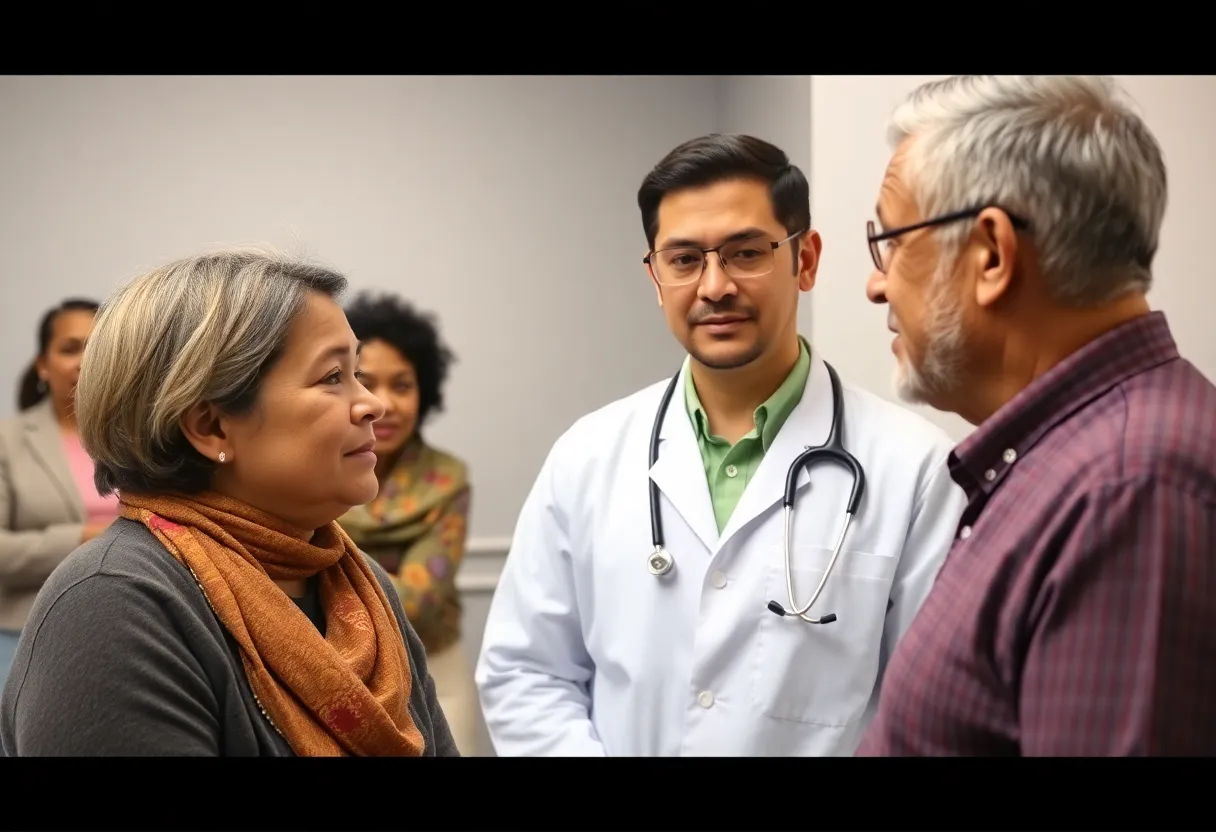News Summary
A recent study reveals alarming low lung cancer screening rates among high-risk populations, highlighting gaps in healthcare access.
Significant Gaps in Lung Cancer Screening Rates Among High-Risk Populations
Lung cancer is a formidable adversary, particularly for those with a history of asbestos exposure or smoking. The early detection of lung cancer is crucial and can dramatically increase survival rates. However, startling data from a recent study reveals that a mere fraction of eligible Americans are taking advantage of recommended lung cancer screenings.
Spotlight on Screening Statistics
Recent findings indicate that less than 20% of individuals classified as high-risk are current on their lung cancer screenings. This ranks alarmingly low considering the guidelines put forth by the U.S. Preventive Services Task Force, which recommends annual screenings for individuals aged 50 to 80 who possess a smoking history of 20 pack-years or more. The disheartening reality is that even among the high-risk populations, screening rates plummet to an abysmal 5% for those without insurance or access to a primary healthcare facility.
The statistics vary significantly by region, with southern states exhibiting lower screening rates. The study analyzing data from nearly 26,000 eligible individuals showed that only 9.7% of individuals in Wyoming were up to date, while Rhode Island boasted the highest screening prevalence at 31.0%. This variance highlights the urgent need for targeted initiatives to bridge these healthcare gaps.
Barriers to Screening
The data paints a concerning picture of the healthcare landscape, especially for populations historically marginalized in health services. A significant barrier remains for uninsured individuals, with only 3.7% receiving timely screenings. Furthermore, the expansion of Medicaid in certain states has correlated with significantly higher screening rates, showcasing the importance of accessible healthcare coverage.
Lisa Lacasse, president of a cancer advocacy group, has emphasized the necessity for increased accessibility to care, particularly in states that have yet to expand Medicaid. These efforts might alleviate the alarming statistics of lung cancer-related deaths, especially in southern regions where both screening rates and mortality burdens are notably high.
Increasing Awareness and Research Needs
This groundbreaking research settles in the backdrop that screening rates are slowly improving compared to previous years. A recent study revealed that the percentage of eligible individuals who are up to date with their screenings rose to 18% in 2022. Yet, it is evident that much work remains to be done to ensure higher compliance rates.
Dr. Priti Bandi from the American Cancer Society, the team behind the recent assessment, stated that ongoing efforts must focus on increasing public awareness about the importance of lung cancer screenings. Furthermore, individuals with a history of smoking and/or asbestos exposure are strongly encouraged to consult their healthcare providers for appropriate screening options for both lung cancer and mesothelioma.
Diverse Risks and Physician Engagement
As the dynamics of lung cancer shift, alarming trends have emerged. Recent research indicates a rising incidence of lung cancer among nonsmoking populations, especially amongst Asian American women. This highlights a pressing need for further studies exploring risk factors in these groups, including second-hand smoke and cooking oil fumes.
Initiatives like free lung cancer screenings targeted at underserved populations exemplify proactive measures being taken to address these disparities. It is crucial that healthcare practices evolve alongside emerging data to best serve the communities most at risk.
Final Thoughts on Screening Necessity
The daunting reality is that many eligible Americans are still unmonitored for lung cancer, affecting their chances for early intervention. State-specific initiatives to bolster healthcare access and community education on the importance of lung cancer screenings may prove vital in combating this public health challenge.
As the landscape continues to evolve, an emphasis on screening development and access could make a critical difference in saving lives—transforming the fate of a population vulnerable to the ravages of lung cancer, while also acknowledging the potent historical link between asbestos exposure and this aggressive disease.
Deeper Dive: News & Info About This Topic
HERE Resources
Family of Carpenter Settles Case Against Medway Council
Asbestos Discovery Prompts Safety Concerns in Willebroek
Bresee Tower and Courthouse Annex Set for Demolition: Major Changes Ahead
The Ongoing Battle Against Mesothelioma: New Research Offers Hope
Tragic Loss of R&B Star Angie Stone in Car Accident
Tragic Loss: Linda Loree Weburg Succumbs to Mesothelioma at 82
Tragic Loss: Actor and Writer James Houghton Dies from Mesothelioma
Community Confronts Asbestos-Related Fatalities
Retired Plumber’s Death Linked to Asbestos Exposure
Mesothelioma: The Silent Killer Overlooked by Many
Additional Resources
- Nature: Significant Research on Lung Cancer
- Wikipedia: Lung Cancer
- The Lancet: Lung Cancer Insights
- Google Search: Lung Cancer Screening Statistics
- ASCO Post: Lung Cancer Screening Prevalence
- Encyclopedia Britannica: Lung Cancer
- CBS News: Rising Incidence of Lung Cancer among Asian American Women
- Google News: Lung Cancer Awareness



















